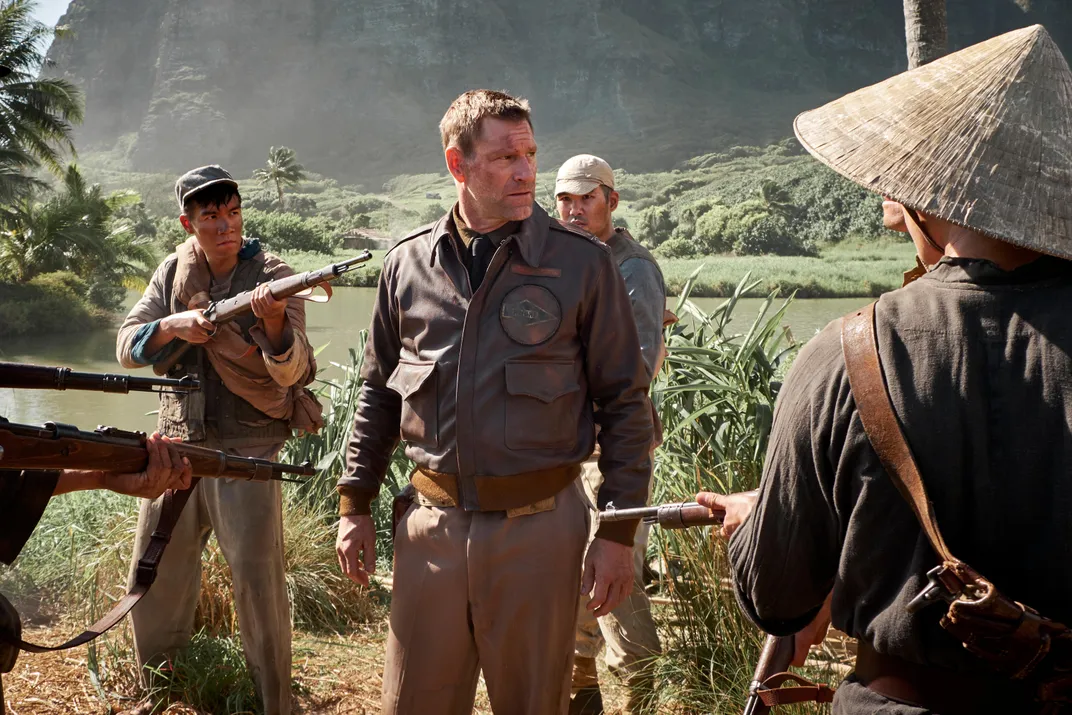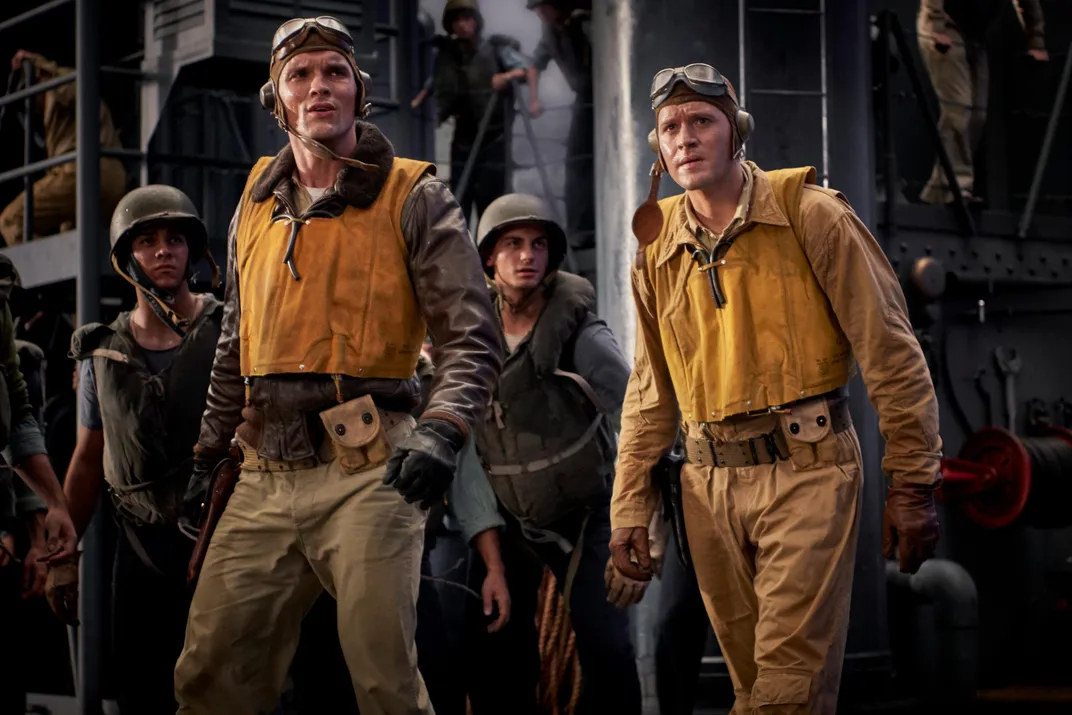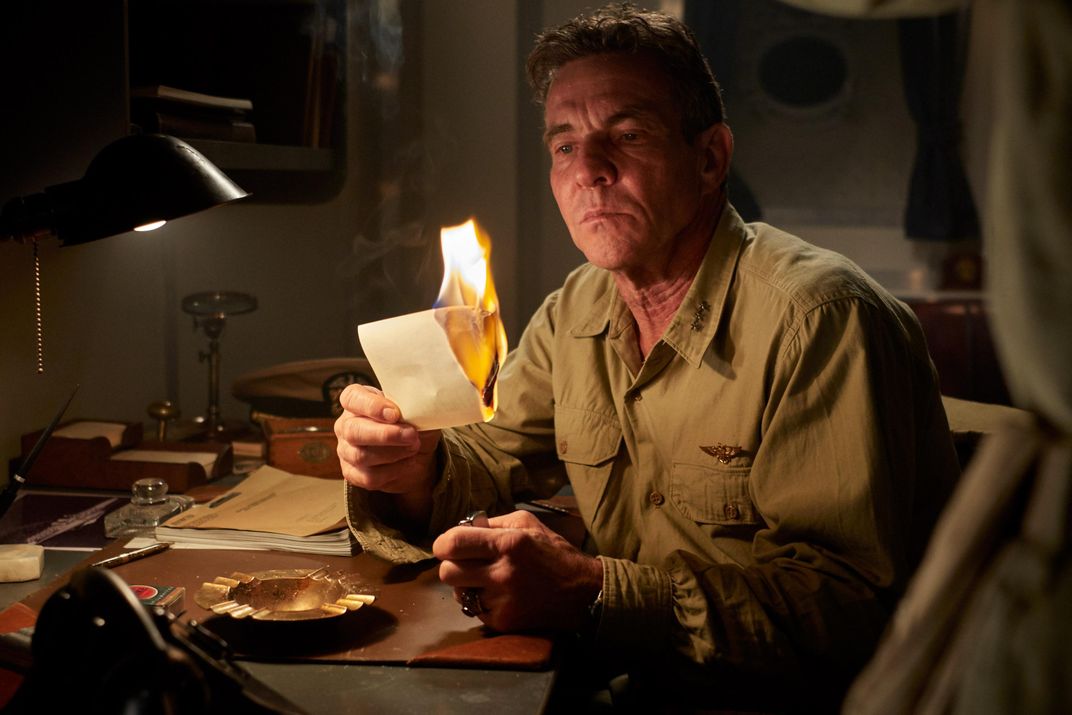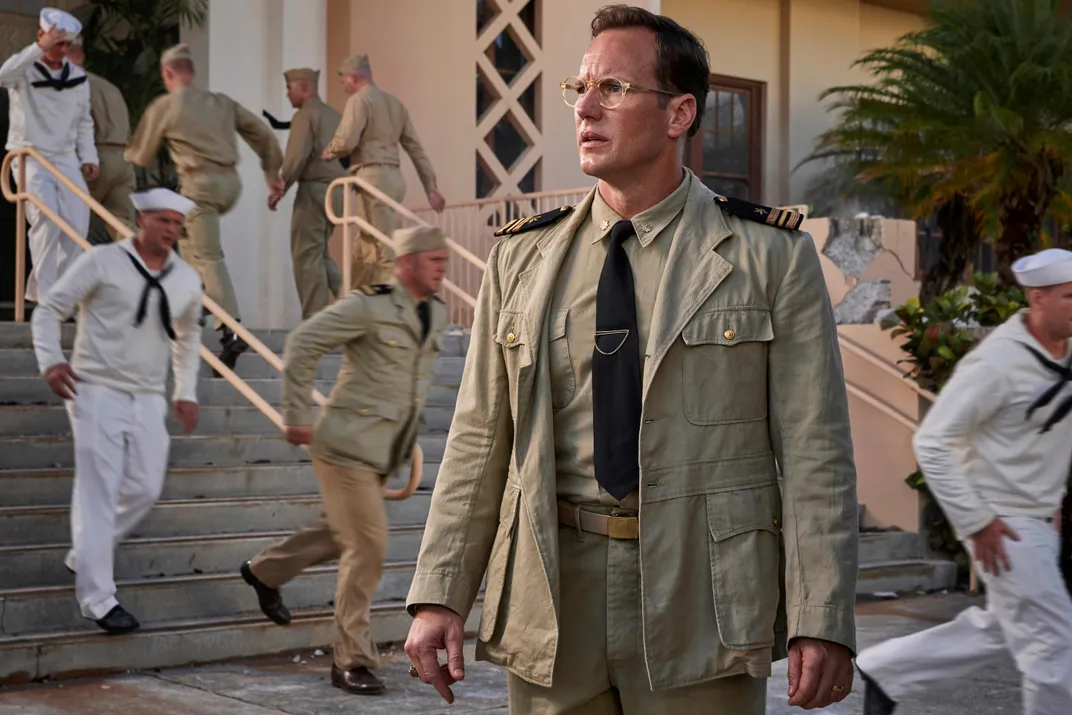Midway vs. Midway vs. The Battle of Midway: How the New Movie Stacks Up to Past Film Versions
The famed WW2 battle has been the subject of several films. The new retelling keeps its focus on men of history.
/https://tf-cmsv2-smithsonianmag-media.s3.amazonaws.com/filer/0f/39/0f398963-d802-44bb-b29c-eb8ad7d82f68/midway-mid_bajo_vfx_05_r2_rgb.jpg)
Midway, a fast-paced recounting of the war in the Pacific from the Japanese attack on Pearl Harbor to the decisive three-day battle seven months later, was the most-seen movie in America over the Veterans Day weekend. Coming from Independence Day director Roland Emmerich, it’s a dutiful, uncomplicated retelling that nevertheless sticks closer to history than the 1976 film Midway did—never mind that the screenwriter and director of Midway ’76 (Donald S. Sanford and Jack Smight, respectively), along with several prominent members of the movie’s large cast (Henry Fonda, Charlton Heston, Glenn Ford, Cliff Robertson, and Hal Holbrook) were all real-life World War II veterans.
Unsurprisingly, Emmerich’s Midway relies heavily on modern filmmaking tools—particularly greenscreens and computer animation—to create the illusion of the massive sea and air battle that occurred nearly eight decades ago. Many of the ships and aircraft involved are now extinct, or nearly so. Though the production was permitted to shoot on location at Joint Base Pearl Harbor-Hickham as well as on board the USS Bowfin—a World War II attack submarine docked at Pearl Harbor that has been open to the public as a museum since 1981—much of its photography was completed on soundstages in Montreal. There, the production used greenscreens to simulate the deck of the USS Enterprise (CV-6), the decorated carrier that was scrapped in the 1950s, along with many other environments. It also made use of what Midway production designer Kirk M. Petruccelli called “museum-quality” recreations of SBD Dauntless and TBD Devastator bombers built for the movie.
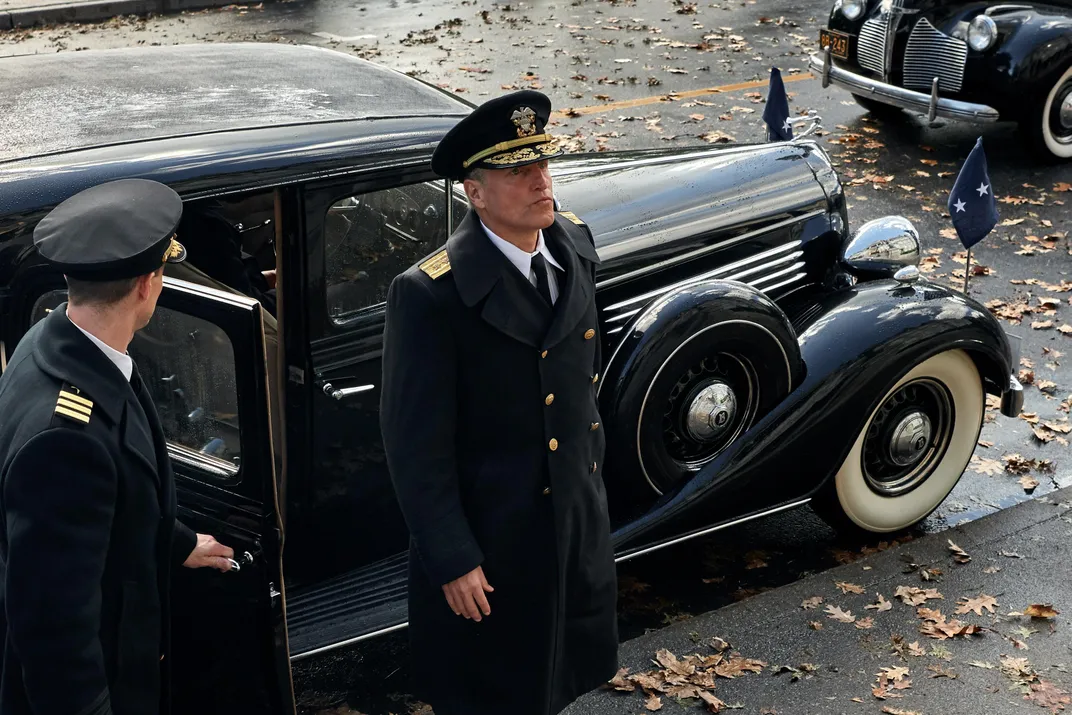
The first Midway movie was a documentary shot by Hollywood director John Ford (with cameramen Jack Mackenzie, Jr. and Kenneth Pier) during the actual battle. Film historian Mark Harris's 2014 book Five Came Back: A Story of Hollywood and the Second World War contains a detailed account of the documentary’s origin and impact. Ford had volunteered himself after Admiral Chester Nimitz ordered him to select several capable members of the Field Photo unit Ford commanded for an assignment Nimitz described only as “dangerous.” Filming from the concrete roof of the main power station on Midway Island as dozens of Japanese Zeroes attacked on the morning of June 4, 1942, Ford got the most vivid and alarming footage of the war yet captured, and sustained a three-inch shrapnel wound to his arm in the process. (Over time, Ford would go from downplaying his individual valor to exaggerating it, eventually omitting the achievements of Mackenzie and Pier from his recollection of the day.)
The four hours of footage he brought back to Los Angeles later that month included about five minutes of explicit combat scenes. Knowing that the extraordinary footage would likely be chopped up for newsreels by a War Department hungry for visual evidence of the U.S. triumph in the Pacific, or that it would be censored if it left his control, Ford gave the reels to his subordinate Robert Parrish, with strict orders not to let anyone else near them. Working in secret, Ford and Parrish began turning the raw footage into what would become the 18-minute film The Battle of Midway—a documentary, yes, but one in which Ford used all the storytelling tools available to him, including artificial sound effects, a musical score, and voice-over narration by four different actors (including Henry Fonda, who would play Chester Nimitz in the 1976 Midway). The result was a somber artistic statement about duty and sacrifice rather than the more jingoistic film that had been requested of the director.
To make sure The Battle of Midway got released without interference, Ford inserted a brief close-up near the end of the film of Major James Roosevelt—a Marine, but more importantly, the son of President Franklin Delano Roosevelt. Although Major Roosevelt would be one of 23 Marines awarded the Navy Cross for their raid on Makin Island the following August, there is, says Harris, no conclusive evidence he was present at the Battle of Midway at all. But no matter: Once President Roosevelt saw Ford’s The Battle of Midway, he told White House Chief of Staff William Leahy, “I want every mother in America to see this film.” Ford’s gambit worked.
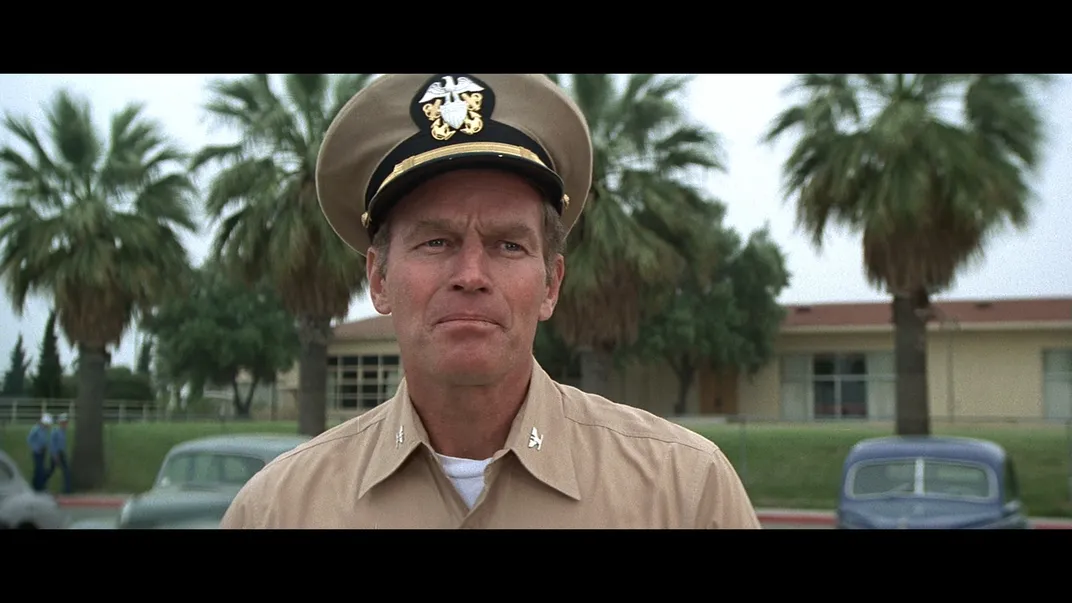
The 1976 Midway took a different approach to recreating the battle: It simply recycled old footage from earlier movies. Some were already old at the time—1944’s Thirty Seconds Over Tokyo, for example—and others, like the Japanese film Storm Over the Pacific, were probably unfamiliar enough to American audiences for the borrowing to go unnoticed. But a few of Midway’s sources were of more recent vintage. Many of the dogfights were reused from 1969’s The Battle of Britain, and other material came from the American-Japanese coproduction Tora! Tora! Tora!, a lavish 1970 dramatization of the attack on Pearl Harbor.
The 1976 Midway also pushed historical figures from the battle into supporting roles, giving the most screen time to Charlton Heston’s Captain Matt Garth—a fictional character whose son is in love with a Japanese-American woman interned along with her parents. Garth’s son, played by Edward Albert, asks his old man to intercede on their behalf. If that weren’t melodrama enough, when Midway went to network television after its theatrical run, it was extended with newly shot material so that it could be promoted as a two-night special event. Most of the new scenes were devoted to a subplot featuring Susan Sullivan, an actress 18 years Heston’s junior, as the elder Garth’s girlfriend, who harangues him to retire from the Navy and settle down with her. The Midway Blu-Ray includes a few of these scenes—which were shot in the 4:3 aspect ratio then standard for TV, so they don’t match Midway-the-feature’s theatrical framing—as extras. If the theatrical Midway was already no masterpiece—and it isn’t—these soapy additions are downright laughable.
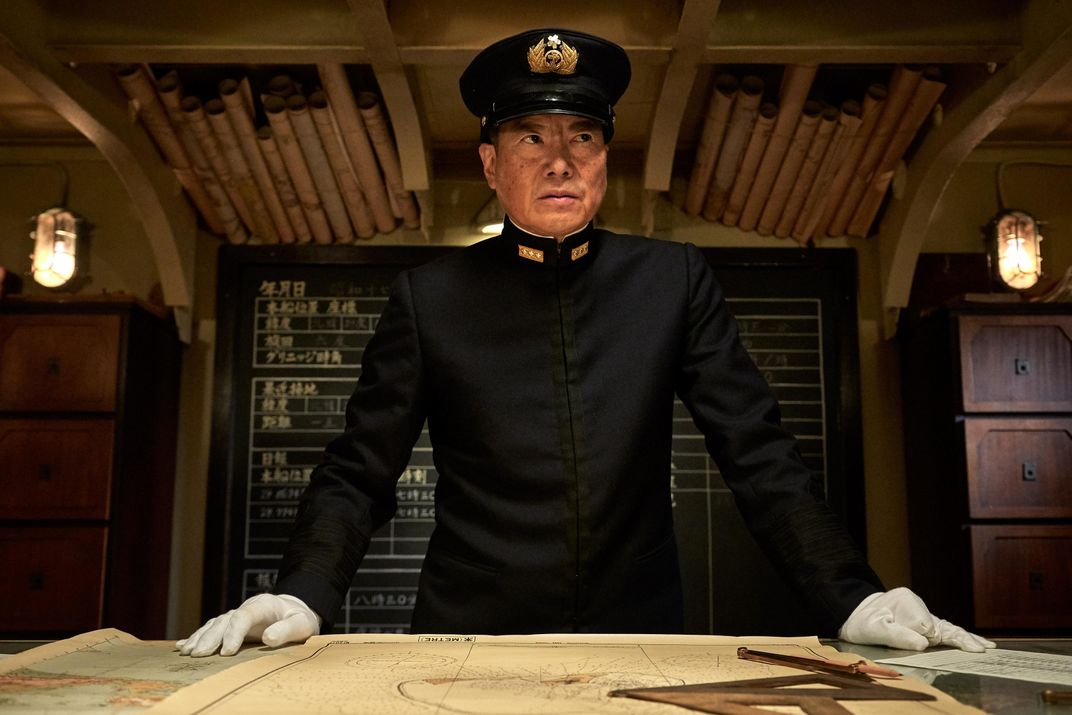
Another way in which Midway ’19 is more sophisticated than Midway ’76 is in its representation of the Japanese officers: This time, they’re played by Japanese actors speaking Japanese instead of English. Etsushi Toyokawa plays Admiral Isoroku Yamamoto, Jun Kunimura appears as Admiral Chūichi Nagumo, and Tadanobu Asano plays Rear Admiral Tamon Yamaguchi. Midway ’76 cast Hawaii-born Americans of Japanese descent in the latter two roles: James Shigeta (perhaps most recognizeable from his role as doomed executive Joe Takagi in Die Hard 12 years later) and John Fujioka, respectively. Japanese screen legend Toshiro Mifune brought his appropriately regal bearing to Yamamoto back then, but because Mifune’s accent was thought too difficult for American audiences to understand, actor Paul Frees dubbed all his lines.



